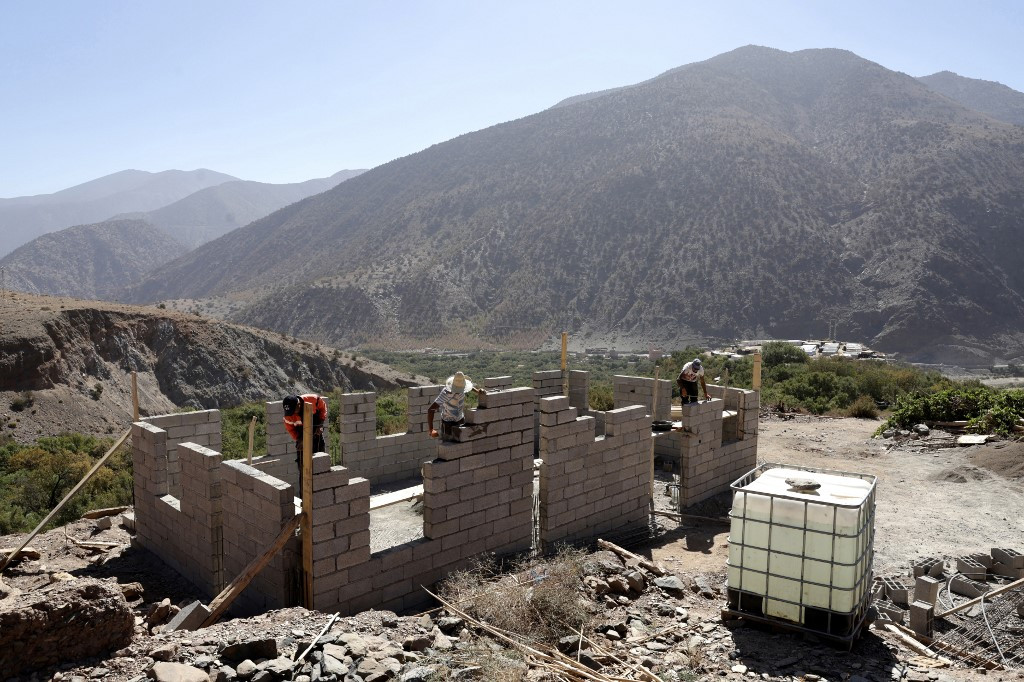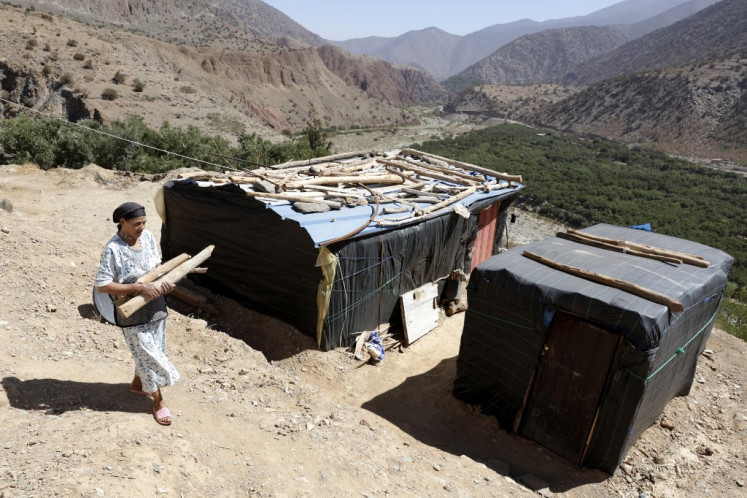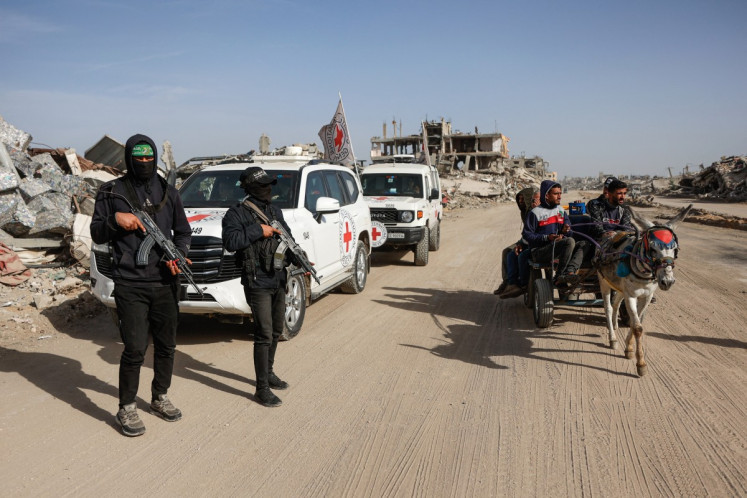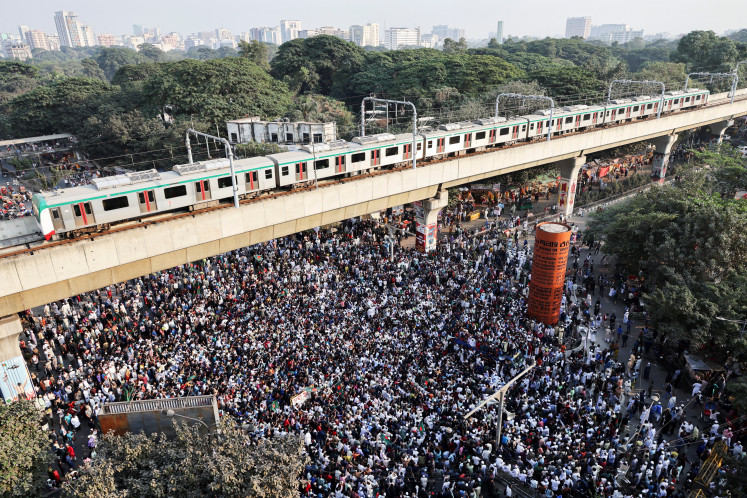Popular Reads
Top Results
Can't find what you're looking for?
View all search resultsPopular Reads
Top Results
Can't find what you're looking for?
View all search resultsChanged 'forever': Morocco slowly rebuilds a year after quake
The 6.8-magnitude quake killed nearly 3,000 people and damaged the homes of over two million people across the High Atlas region.
Change text size
Gift Premium Articles
to Anyone
 Workers construct a new house in Douar Tiniskt, in the el-Haouz province in the High Atlas Mountains south of Marrakesh, on Aug. 27, 2024, almost a year after a devastating 6.8-magnitude earthquake struck the country. The 6.8-magnitude quake killed almost 3,000 people and damaged the homes of over two million people across the High Atlas region. (AFP/-)
Workers construct a new house in Douar Tiniskt, in the el-Haouz province in the High Atlas Mountains south of Marrakesh, on Aug. 27, 2024, almost a year after a devastating 6.8-magnitude earthquake struck the country. The 6.8-magnitude quake killed almost 3,000 people and damaged the homes of over two million people across the High Atlas region. (AFP/-)
F
or the past year Kebira Ait Bellaid has been living in a tent in a mountain village in Morocco, haunted by the memory of losing her daughter and three grandchildren.
"I can still hear my nine-year-old grandson's screams under the rubble," the 52-year-old said, recalling the Sept. 8 earthquake last year that devastated the area.
"This earthquake has changed me forever," she told AFP.
The 6.8-magnitude quake killed nearly 3,000 people and damaged the homes of over two million people across the High Atlas region.
In Tiniskt, a village perched in the mountains about 70 kilometers southwest of Marrakesh, 45 people lost their lives.
Of the roughly 500 villagers who remain, many are still living in tents, unable to escape the trauma.
Tears welling in her eyes, Khadija Id Yassine said she tries to forget about the quake but "it remains anchored" in her mind.
"Life has been hard in the tent, between the freezing cold of winter and the stifling heat of summer," said Yassine, a mother of three whose house is still awaiting reconstruction.
While most debris has been cleared, the village still bears signs of destruction. Only the mosque and three houses, built with concrete, remain standing.
The government has provided most families in Tiniskt with an initial payout of 20,000 Moroccan dirhams (around US$2,000). But no houses have been rebuilt.
Al Haouz province, which includes Tiniskt, was the worst affected area, with about 24,000 houses slated for reconstruction, but only around 1,000 have been rebuilt.
Amine Bouih of Al-Omrane public construction agency said it was still tricky to access damaged areas in mountainous terrain.
A woman carries wood as she walks in front of temporary housing structures in Douar Tiniskt, in the el-Haouz province in the High Atlas Mountains south of Marrakesh, on Aug. 27, 2024, almost a year after a devastating 6.8-magnitude earthquake struck the country. The 6.8-magnitude quake killed almost 3,000 people and damaged the homes of over two million people across the High Atlas region. (AFP/-)Ambulance driver Brahim Ait Ouarah, from the village of Ouirgane near Tiniskt, said he paid out of his own pocket to rebuild his home, only getting state aid later.
"The six months I spent in a tent were very difficult," said Ouarah, who lost his wife and son in the quake.
"I was eager to turn this painful page, even when nothing can compensate for the lost lives."
Locals are not only frustrated with the slow pace of rehousing, but also with how the new homes are being built.
Concrete is being widely used in Tiniskt and other villages, rather than traditional building materials like clay and stone.
Architect Khalil Morad El Gilali thinks this is "a big mistake".
"It is expensive, not suitable for this environment and not reliable," he said.
Gilali has been involved in the reconstruction of 70 houses using the traditional clay and stone of the villages, turning down projects that use concrete.
He argues that the authorities, in their rush to rebuild, have shown "a lack of vision".
But Al Omrane's Bouih said traditional architecture takes more time, a luxury in short supply when people desperately need shelter.










